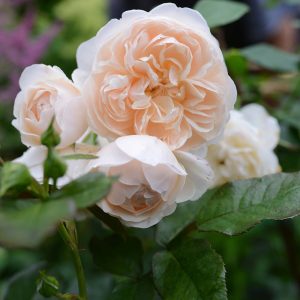Description
Rubus x loganobaccus, commonly known as loganberry, is a deciduous hybrid berry that is a cross between a raspberry and a blackberry. It has long arching canes with thorny stems and lobed, dark green leaves. In summer, loganberry produces large, juicy, deep-red berries that are slightly tart and perfect for making jams, pies, and other desserts. This vigorous grower prefers a sunny position in well-draining soil and benefits from regular pruning to control its growth and increase fruiting. Loganberry can be grown as a standalone specimen or trained against a wall or trellis, and it combines well with other soft fruits such as strawberries, blackcurrants, and gooseberries.
Key Facts
- Common Name(s):Loganberry
- Hardiness:Fully hardy
- How big will I get? Rubus x loganobaccus can grow to a height of 2.5m and a spread of 2m.
- Did You Know That:The loganberry was first developed in the late 1800s by a California judge named James Harvey Logan?
Plant Calendar
A rough guide to how this plant will change through the year.
| Jan | Feb | Mar | Apr | May | June | July | Aug | Sept | Oct | Nov | Dec | |
| Flowering Time |  |
 |
 |
 |
||||||||
| Foliage Colour |  |
 |
 |
 |
 |
 |
  |
  |
  |
| J | F | M | A | M | J | J | A | S | O | N | D |
 |
 |
 |
 |
||||||||
 |
 |
 |
 |
 |
 |
  |
  |
  |
Care Guide

Soil Requirements
Rubus x loganobaccus prefers moist but well-draining soil. This plant can grow in soil with a wide range of pH levels, it is not picky about the pH level of the soil.

Best Position
Rubus x loganobaccus prefers a sheltered position and can cope with either full sun or partial shade.

Maintenance
Rubus x loganobaccus should have all fruited canes removed down to ground level in Autumn. Then select up to eight young canes around 10cm apart and tie them in to some supports. These young canes will then fruit the following year.

Pest, Diseases and Wildlife
Rubus x loganobaccus is generally pest free, and it tends not to have problems with diseases. It is also known to attract bees, butterflies and other pollinators. It is not considered to be toxic.





